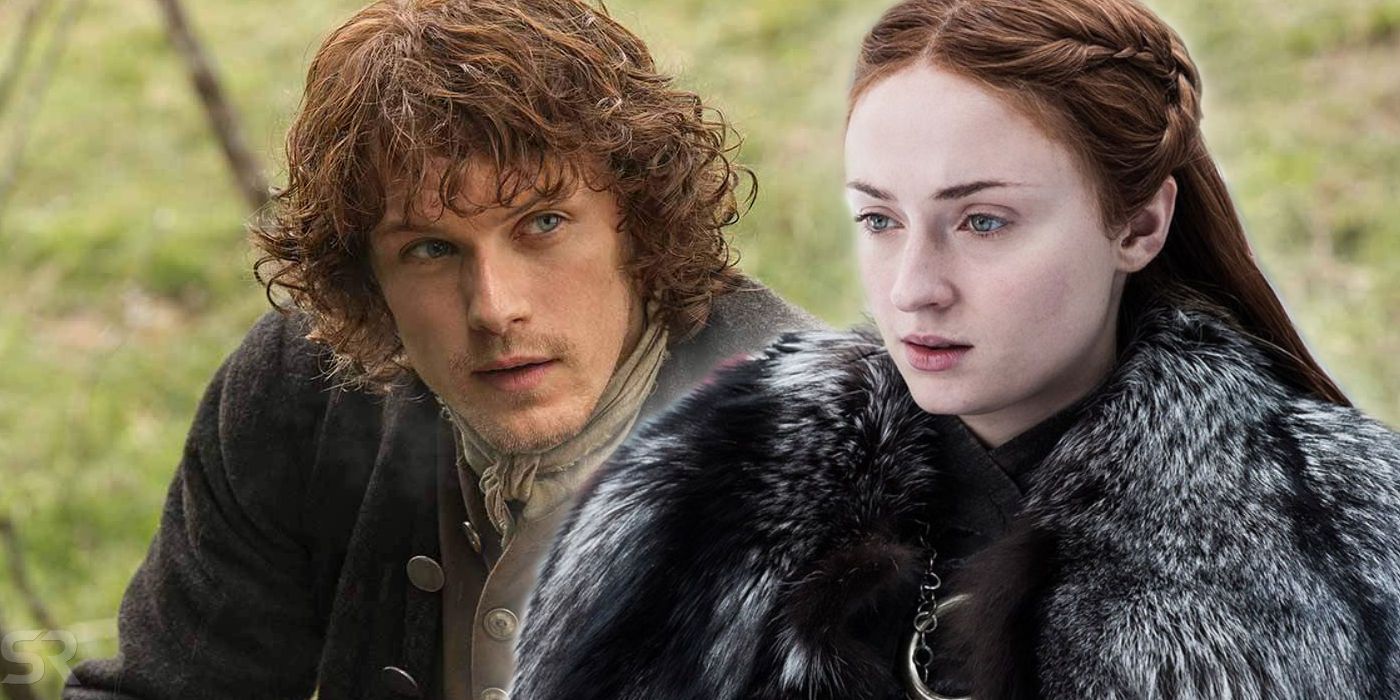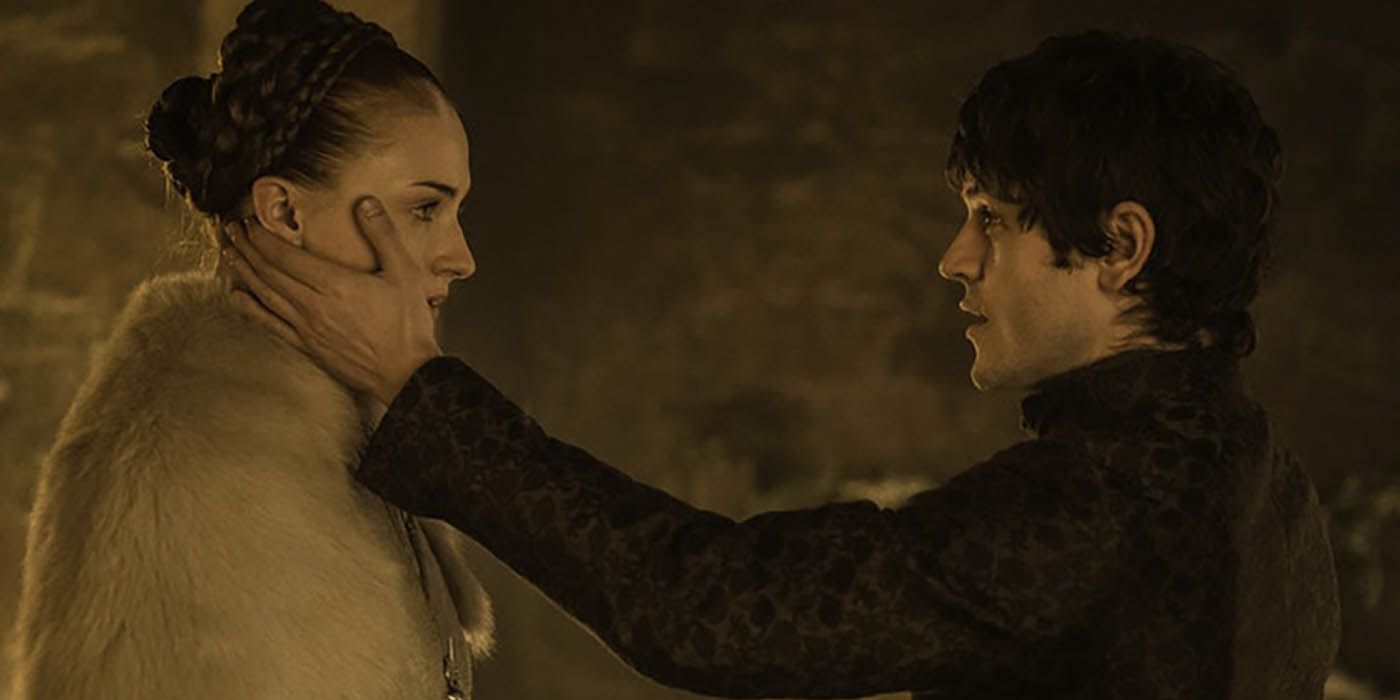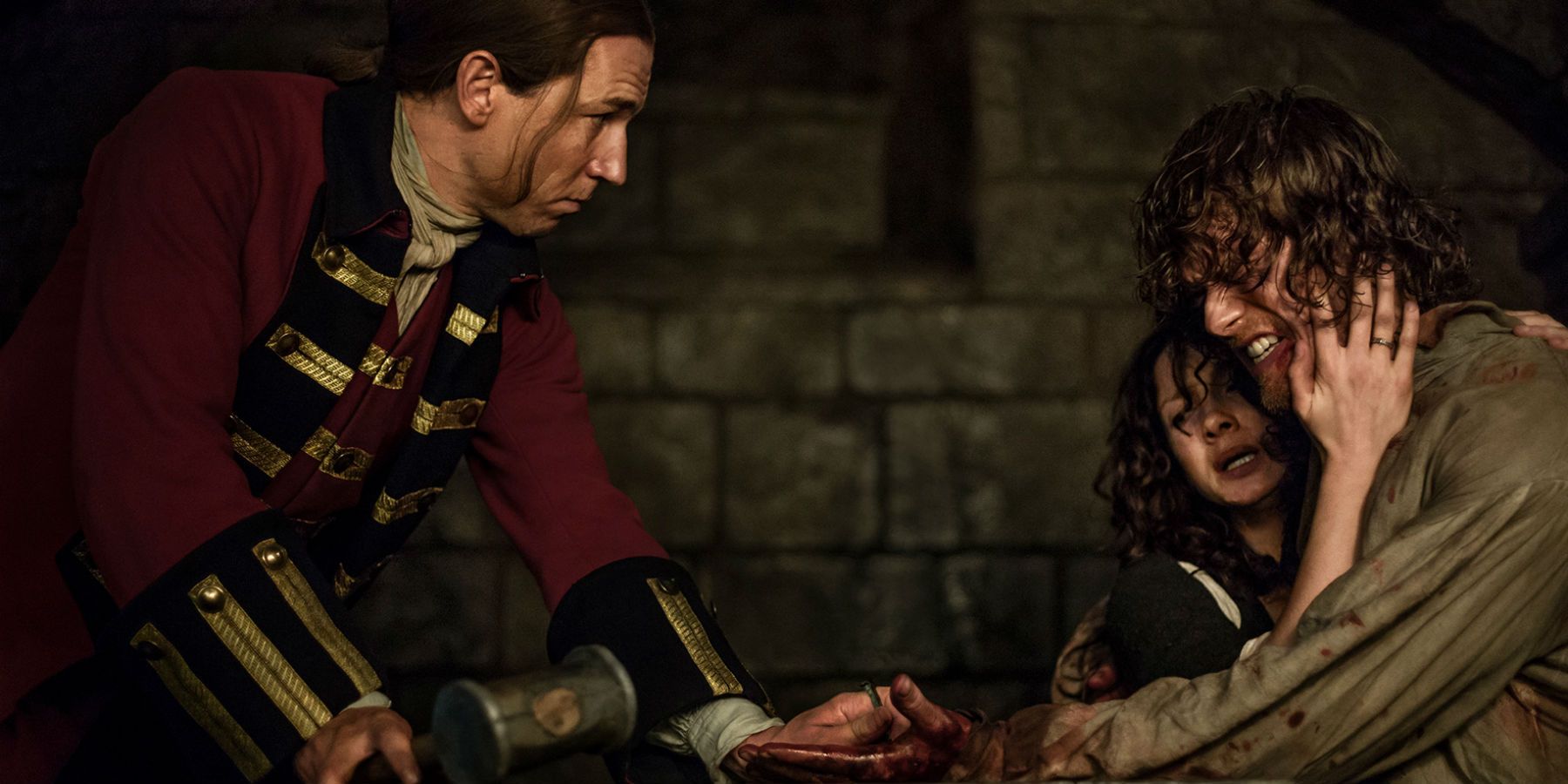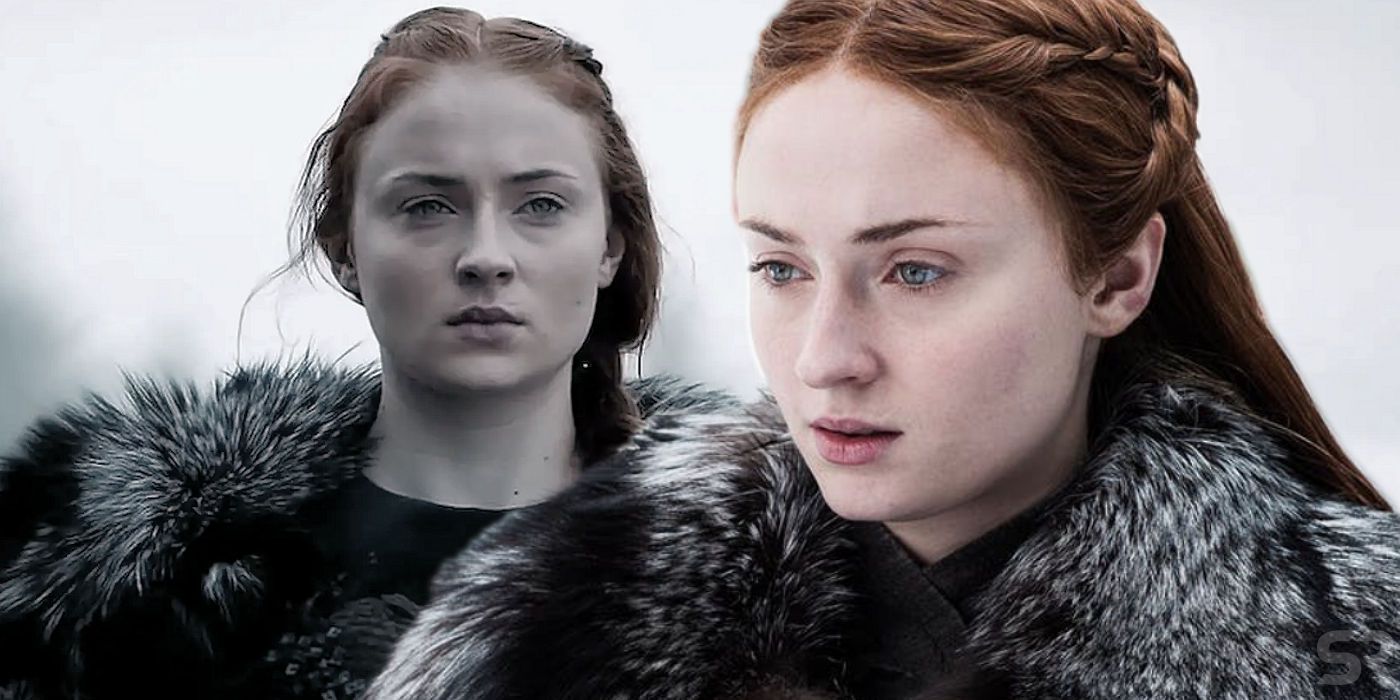Warning: This article contains descriptions of scenes of sexual violence.
Outlander and Game Of Thrones are two series with a surprising amount in common; both are packed with sweeping gowns, bloody battles, political intrigue, and lots of sex scenes, but there's one huge difference in the way that they deal with the topic of not just sex, but sexual violence.
Each of these series has its strengths and weaknesses - although fans will certainly argue over which curly-haired leading man is the better one, and whether the Highlands of Scotland is a more picturesque setting than King's Landing. In this area, though, Outlander definitely comes out on top, with multiple rape scenes being treated with real sensitivity and care - while Game of Thrones sparked outrage with its treatment of rape as a plot device, and a clumsy one at that.
Sexual violence is a tricky topic when it comes to television in general. While rape is part of a huge number of shows (and films), it's rare to see it portrayed in a way that doesn't breeze past it, or use it to create unnecessary drama, interest in an otherwise dull character, or (possibly worst of all) some kind of romantic association between rapist and victim. While some shows get it right, others fail utterly - and when two shows are as similar as these magical/historical/romance/battle series, it truly shows where treatment of this sensitive subject goes wrong.
Game Of Thrones' Most Controversial Scene Doesn't Work
Game of Thrones certainly doesn't shy away from graphic scenes of sexual violence, and while this started back in season 1 (when Drogo raped Daenerys on their wedding night, a problematic start to their love story), the show's most controversial scene of this nature came in season 5, episode 6,"Unbowed, Unbent, Unbroken". In this episode, Sansa Stark is being held at Winterfell, and is married off to the odious Ramsay Bolton. The episode ends on her wedding night, when Ramsay rips off her dress and rapes her, forcing Theon to stand at the door and watch him do it. The scene itself caused controversy, as fans questioned if it was really necessary to show this in order to convey how horrible Ramsay is, or how miserable Sansa was there. Surely Ramsay's predilection for hunting humans with hounds, and his cheating on Sansa with his mistress would be enough.
However, the scene is in the books (after a fashion, as in A Song Of Ice And Fire it doesn't happen to Sansa, but to Jeyne Poole, who is posing as Arya Stark), and it's far from Game of Thrones' only rape. However, the decision to include it, and to focus on Theon's reaction instead of Sansa's trauma, is one that left many fans unhappy. This controversy was then revived in Game of Thrones season 8, when Sansa and The Hound chat about everything that has happened to Sansa since she was a naive girl in King's Landing. Here, it is laid out that had Sansa not been traumatized, she wouldn't be the woman she is today, who is strong and capable (and ends up Queen in the North).
Once again, fans were furious at the suggestion that rape makes a woman strong or interesting, or that Sansa couldn't have become the character she is without suffering sexual abuse at the hands of men. This exchange not only takes away her agency and growth, but also shows her barely reacting to the Hound's comment that she was "broken in", suggesting a total lack of awareness of the lasting trauma that this would cause. Yes, she may be so hardened by the loved-one-pile-up of tragedy that was Game of Thrones that she doesn't react to this casual taunting, or she may be putting a positive spin on a hideous situation. However, given the show's history with this kind of scene, many fans feel that it was simply the final proof that there was no sensitivity here.
Outlander Shows How Sexual Violence Should Be Depicted
Outlander, on the other hand, has two major rape scenes (and plenty of other scenes that reference assault), but both are excellent examples of how television can handle sexual violence. The first of these (and the more important, in terms of the story so far) is that of Jamie Fraser at the hands of Randall when he was imprisoned. The season 1 finale (which aired only weeks after Sansa's scene in Game of Thrones) included flashbacks, as Claire attempts to heal Jamie after he is broken out of prison, and Jamie struggles to cope with what was done to him. In many ways, this scene is more graphic and disturbing than the one in Game of Thrones; it includes torture as Jamie's hand being nailed to the table, as well as sexual assault, and is told in scenes that are cut with scenes of Claire performing surgery on Jamie's mangled hand. Viewers also hear his anguished screams, in a scene that is gorier, more graphic, and more intense than that between Sansa and Ramsay.
However, there are some key differences between these; not least of which is the gender of the victim. While women being raped on-screen is wildly overused, male rape is rarely depicted - and often not treated with enough gravity off-screen. The focus is also entirely on Jamie himself, his recollections, his injuries, and his trauma; Sansa's scene is as much about Theon's anguish as it is Sansa's. Finally, and potentially most importantly of all, the repercussions of Jamie's trauma are seen throughout the rest of the series. This is not a one-and-done episode, where Claire magically fixed both his hand and his psyche with the power of love (and medical training), leaving him a stronger man. Instead, Jamie is clearly struggling for a long time after this event; he is often seen as triggered, he struggles with touch, and in the most recent season, his past informs his response to discovering that his daughter was raped by Stephen Bonnet.
Brianna's rape at Bonnet's hands is the second major instance of sexual violence in the show, and is also dealt with appropriately - and extremely differently. In this situation, Outlander chose not to go for the graphic, instead showing Brianna being dragged into the back room of a tavern while the patrons ignore the situation, and then ignore her screams. While, like Sansa's scene, this puts the focus on the bystanders, there is a major difference here. These are not characters that the audience is invested in, like Theon was. The scene is not designed to elicit sympathy for them, for suffering through it, but instead to showcase how much more horrifying it was for Brianna to know that no one was willing to help her. And because these patrons are unknowns, the viewer's focus is still very much on Brianna, even when the camera isn't. This scene also makes a point about bystander apathy, a very real problem when it comes to real-world sexual assault.
How TV Shows Can Do Better In The Future
The point of drawing these comparisons is to show that there isn't necessarily an issue with including sexual violence on television; in fact, it's important to be able to explore the topic, and hopefully help to raise awareness of the ways in which this can happen, how it can affect survivors, and potentially even help to decrease the stigma and help encourage survivors to come forward. In addition, of course, suggesting that no series should include rape would be to suggest that creators sanitize stories, removing real-world problems because they are unpleasant. Instead, TV shows need to be taking the Outlander route, rather than the Game of Thrones approach, in order to ensure that they are treating these scenes with sensitivity and respect.
The most important element is that sexual assault should not be used as a plot device - it doesn't make weak women stronger; it doesn't make boring women interesting, and it doesn't serve as an inspiration for positive change - at least not in the span of a few episodes. These scenes should be focused on the victim - it's not about the perpetrator or the people (especially the men) in their lives, and shifting focus can be an extremely problematic way to further dehumanize and minimize victims. Furthermore, the inclusion of "sexy" elements in rape scenes is deeply problematic; comparing Brianna and Sansa's scenes throws this into sharp relief. The audience sees Sansa's dress being ripped off, and sees her naked back, but there is no similar bodice-ripping or nudity in Brianna's scene. This kind of violence should be shown for what it is - violent - rather than sexualizing the victims, even in a small way.
Finally, shows can do better by exploring all dynamics of sexual assault, rather than simply portraying it as a two-dimensional villainous man (probably a stranger), physically attacking a two-dimensional good girl, alone, while she calls for help. Any gender can be perpetrator or victim, and Jamie's scenes, of a strong and heroic man being attacked, are important when it comes to raising awareness that it's not only small, helpless women who can be attacked. Other series have also raised the bar when it comes to showing attacks that are more complicated than "evil stranger" - where victims are complex, well-developed characters, and where issues of drinking or drug use, or of manipulation and power dynamics come into play. Orange Is The New Black, while extremely different to Game of Thrones and Outlander, does an excellent job of this with Pensatucky's storyline, when she confuses assault and romance when she is raped by a guard who had previously been kind to her.
Sexual violence on-screen is always going to be a fraught subject, and one that has the potential to do harm (perpetuating damaging tropes and stereotypes), or to make a positive impact by allowing for well-considered stories that accurately explore the dynamics and fallout of sexual assault. With Game of Thrones now finished, there's not much they can do to repair the damage of this clumsily handled narrative arc, but with Outlander ongoing (and, of course, so many other series introducing similar storylines on a regular basis), we can hope to see more accurate and sensitive portrayals of sexual violence in the future.
If you have been a victim of assault, and need to reach out, there are multiple helplines available, including Rape, Abuse and Incest National Hotline
1.800.656.HOPE | www.rainn.org




